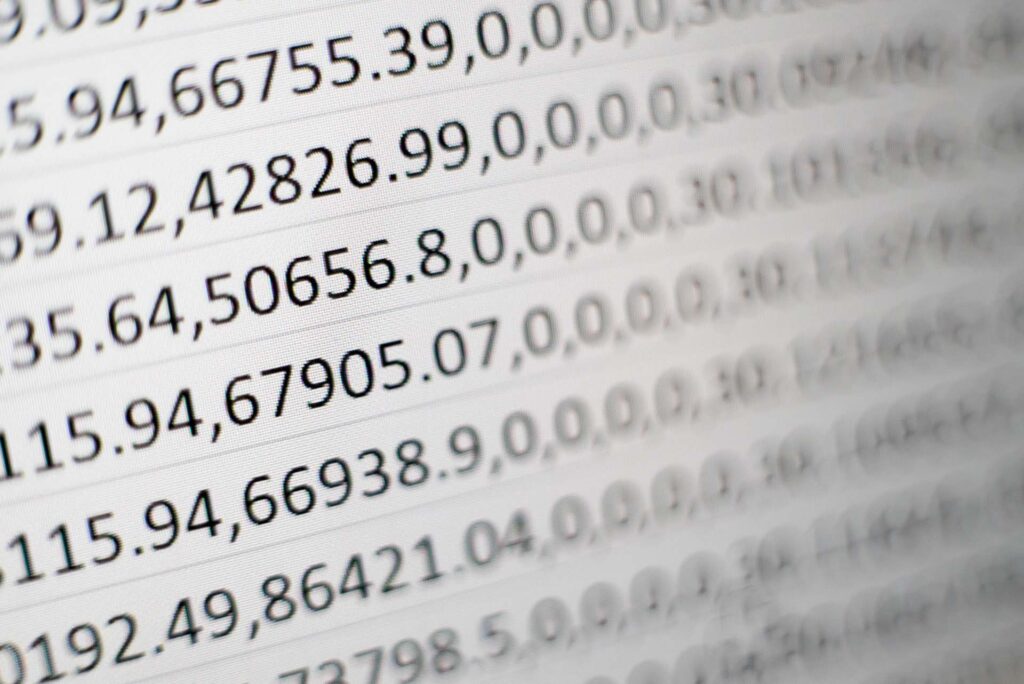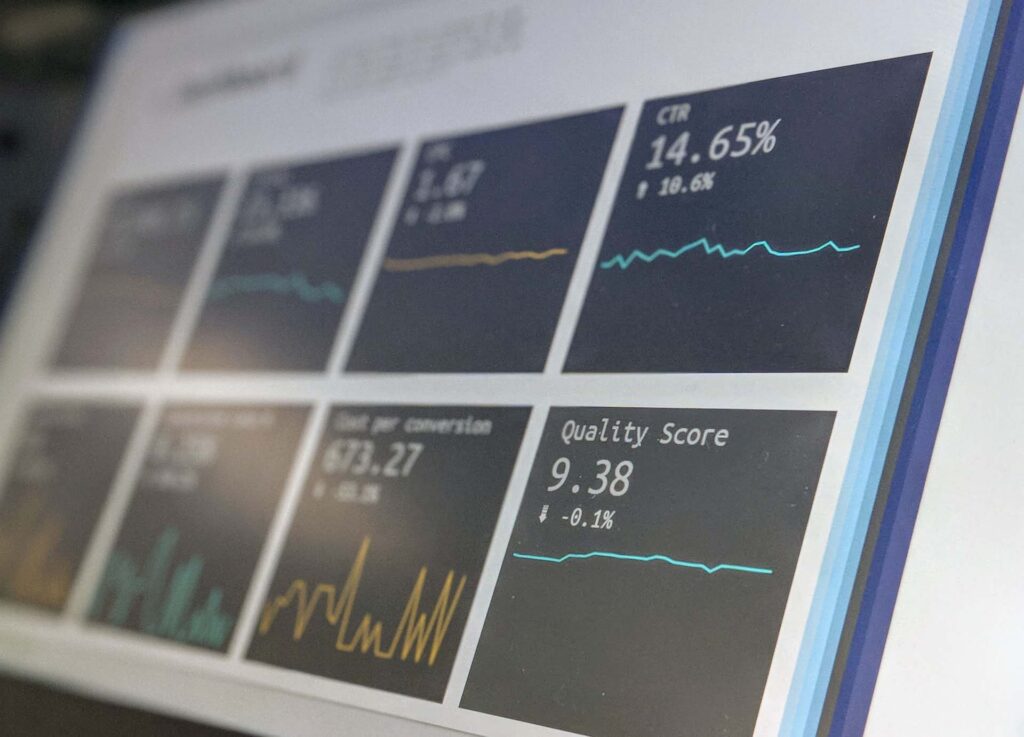Data monetization means extracting money from data. The idea is simple: all the information you have must be worth something, so try to get paid for it. But how do you do this, in practice? In this complete guide to data monetization, we will show many ways this can be done.
What is Data Monetization?
What is Data?
To understand data monetization, we need to understand the concept of data. Data is literally any piece of raw information you might have, about potentially any topic. When it comes to data monetization, this data that you have is typically stored somewhere: on a computer, on a set of files, or even on paper.
Data is an abstract concept, so it may be hard to grasp what data really is. But truly, it is any piece of raw information. A few examples will make things clearer:
- The list of transactions in your ecommerce website
- Name, age, gender of your users or customers
- Information about the temperature of an industrial machine, sampled every second and stored
- List of products each customer purchases at the grocery store
- A flight plan
- A book*
- An Excel file with the financials of the company*
So, any piece of information can be considered data. Note that we put a note to the last two items, because these are not really “raw data”. So, what is “raw data”? In short, raw data is unstructured information that is left as is, not rearranged for a specific purpose. The list of transactions from the first example is just that: a list of transaction with no specific purpose in itself (except archiving). It does not provide insights by itself, you need to look into that and make sense of the data.
Instead, information is data structured in a way to make sense and convey insight. It is certainly the case of a book, that wants to tell a story or explain something. It is also the case of a financial report, where the primary goal is specifically to rearrange and summarize data to provide insight.

Yet, while these pieces of information are not raw and provide insight by themselves, you may want to analyze them further for data monetization. In other words, for a purpose different than their own, they are still raw data. For example, is common to throw as much information as possible to a machine learning algorithm to try to figure out patterns.
What is Data Monetization?
Data monetization is extracting monetary value from the data you have. You can do this in three main ways:
- Just sell the data and let someone else take advantage of it
- Extract insight from the data, sell the insight
- Extract insight from the data and use it yourself, for example to increase revenue or reduce costs
This is a comprehensive guide to data monetization, so we will see how to do all three. As you will see, the hardest part is to obtain insight from the data. Furthermore, not all three options will apply to every circumstances. Sometimes, you may not be able to sell the data, while others you may not be able to extract any insight.
Before we move any further in the discussion of data monetization, let’s make clear the concept of insight so that we are sure to be on the same page.
An insight is any sort of actionable information that provides value, based on the data.
For example, you may analyze balance sheet and other information about a company and realize it is undervalued in the market, and its stock price is destined to raise. Here, the actionable insight is specifically that: this company is undervalued, so you can buy it at a discounted price, lower than it is really worth. Of course, the implied action is to buy more stocks of this company.

Insights can be about the future, but also about the present or even the past. For example, you may realize that when an industrial machine overheats it produces more scrap material looking at historical data. So here you know: find a way to reduce the heat and you will reduce waste.
How To Do Data Monetization
Collect Data
The first step to data monetization is having data to monetize in the first place. This means you have to collect such data somehow, and it should be data that you are well positioned to collect, ideally more than others.
A common approach is to log customer transactions or generally any event that happens to your company that you may interested in, and put that information in a database or in a data lake. The more data you can collect, the better. This is particularly well suited for customer-oriented businesses and for manufacturing companies.

Companies that sell directly to customers can collect a huge amount of information: what customers like to purchase, what products are purchased together, how often a customer returns to the store, what is the average spend, and so on.
On the other hand, manufacturing companies can collect (thanks to IoT, i.e., many small sensors on machines) information about their production process: machine idle time, how many products are produced per hours, temperature of machines, speed of motors, moisture in the environment, concentration of chemical components, and more. In general, if a company works in business-to-business model, it will find more data to collect on its production processes and costs, as opposed to its customers (the idea is, it does fewer transactions and each of higher value compared to a normal retailer).
When collecting the data, you need to consider how to do it (you will want this to be automatic), how much data are you willing to store, and privacy concerns. Specifically, storing more and more data digitally will require more and more disk space, and thus will have a cost. You need to tradeoff between cost and how much data you want. Privacy is also a concern, if you are collecting personal information about customers you want to do it in a way that complies with the law.

Once you have your data, you can start to think how to best monetize it.
Sell Your Data
This is the first data monetization strategy, and it is so simple. Just take all the data you collected so far and sell them to someone who is interested in buying them. In doing so, you need to be particularly attentive to privacy if you are selling customer data, or any data about people or third parties.
Ensure your agreement with the person who generated the data (your customer who made the transaction) allows you to sell data. For example, in the European Union the privacy regulation (named GDPR) requires you, the data collector, to declare what data you are collecting and why, and have the customer accept it. This means you can’t sell the data to someone else with the mindset “now do what you want with it”. Be sure to check you aren’t breaching any law.
Once you cleared that your data monetization strategy is viable with your legal team, it is time to start collecting money for real. You have two ways of doing this:
- Sell your data once – useful for static information about customers or people, such as a list of email addresses
- Sell a subscription to your data – this can be useful for transactions, continue to stream the data your collect to your buyer
Okay, great, but who do you sell data to? This is a key data monetization concept, and the one that can make or break the success of your strategy. Of course, who is interested in your data will depend on which kind of data you have. But you need to think out of the box to find potential buyers.
For example, imagine buy a lot of industrial machines from a supplier, say Siemens, and that you are a large company. You may agree to send them information about the performance of their machines in exchange for a discount on the maintenance. Your supplier gains from having better insight on how their machines work so they can make better machines in the next version, and you get a discount. This is a win-win situation, and one that manufacturers are exploring with “predictive maintenance” (i.e., collecting data and replacing parts in machines before they actually break).

How do you price the data you sell? This is based on which insight you think someone can extract from that, and how much value they can get in turn. To know, or at least estimate, this value, you need to know how to extract insight from the data.
Getting Insight from Your Data
Sometimes, selling data is not an option and you need to look for a different data monetization strategy. You may not be able to sell data because of privacy, or most commonly because nobody wants to buy it. Nobody will want to buy for several reasons:
- You are an untrusted or unproven provider of data (who proves you didn’t make up the data?)
- The data is too specific to your use case or company (e.g., your financial transactions)
- You don’t have enough data to be of interest for an external buyer
- Potential buyers may prefer to produce data themselves if they can, or buy directly the insight without having to get their hands dirty
For those reasons, it is likely that you will need to extract insight from the data yourself at some point. This is data monetization at its finest. Now, you know what insight is. How do you get it out of data? In general, there are two types of insight you can extract.
- Patterns – “If X happens, then Y is likely to happen”, find some correlation between events, situations, or behaviors (e.g., people who buy bread also buy peanut butter). We may even find patterns with fully automated algorithms.
- Forecasts or predictions – “X will happen in the future”, here we make a deeper analysis and decide what it is likely to happen in the future. Here, algorithms are generally not enough, and we need to add some qualitative analysis.
Now, what patterns to find or predictions to make is the tricky part. That requires expertise and experience, not really with data monetization but with data analysis. If you have a good data analyst and pair her with someone with good business acumen you are likely to be all set here. What will be valuable will depend on the company, and what you are trying to do. The point here is “What questions should I ask?”. Here are some examples:
- How can I maximize cross-sells in a grocery store? (Maybe find products that people often buy together and put them close to each other).
- How can I reduce unplanned downtime from my manufacturing plant? (Maybe find out that machines, before breaking, start to spin slower for a month, so plan a maintenance when they start to spin slower).
- How can I reduce delays in my shipment company when there is congestion at the airport? (Maybe find out congested airports where you are experiencing delays and find alternative routes for those destinations).
- What is the expected monetary value for this site if we build an oil rig? (Maybe gather geological information and compare it to previous drilling sites to make an estimate).
- What makes dissatisfied customers cancel their subscription? (Maybe find the last product they purchased, attempt to provide them with discount or other incentive and collect data to see if it improves the situation).
In short, data monetization is as good as the questions you ask. If you ask the proper questions and are able to find the information supporting your decisions, you will be all set.
How to Price Insight for Data Monetization
Finding insight is hard but defining the price for the insight that you find can be even harder, especially if you want to sell the data without finding the insight yourself. Just like finding the insight and everything else associated with data monetization, there is no golden rule, and you need to adapt to your environment.
However, there is one key concept that should guide you in the pricing of your data monetization: Net Present Value. According to this concept, shortened to NPV, everything can be converted into an amount of “money now”. You have a fancy industrial equipment with some wear and tear? Fantastic, that is the same as having X dollars right now in the bank. You have 15 customers that every month buy a subscription from you? Great, this is the same as having Y dollar right now in the bank.
To calculate the NPV (the amount of equivalent “money now”) you need to start to list all cash flows that your idea, project, or insight in this case will generate. For example, if you perform predictive maintenance on your industrial machines you may be able to save $100k every year, indefinitely. This can translate to an amount of money now.
Of course, the key is to estimate the impact on your cash flows of the insight you have. So, you may want to make multiple estimates (common to do “best case”, “most likely”, and “worst case”).
Sell the Insight
Selling the insight is easy if you produce the insight and you price it. You only need to find the potential buyer. However, if you were able to extract insight from your data, and then to price it, it means you reasonably know how much is worth. Sell them a little lower than that (otherwise having this insight would make no difference for the buyer, as they get the same benefit as they pay to you) and you are done.
Remember, however, to take into account all the proper costs for the buyer. If your insight tells how to perform predictive maintenance on the machines, it is not actually doing the predictive maintenance on the machines. You have only the idea, so you should sell that, and its price and considering other costs will be incurred to make it real.
Use the Insight (Best Data Monetization Strategy)
Probably, the best data monetization strategy is to use the insight you produce yourself, in your own company. This is because you have the most incentive to succeed, and you will be careful to inflate the price of dubious insights.

It is also the most likely strategy you will be able to adopt, since the data you collect are obviously relevant to your company, and privacy concerns are limited. Furthermore, as you implement changes in your operations, you keep collecting data and can monitor if the change you are doing is delivering the results you expect.
Data Monetization in a Nutshell
If you are in a hurry (TL;DR), data monetization is a simple concept. Collect as much data as you can, then try to find some valuable information inside of it: you want to look for patterns to make correlation, or other information to make forecasts and prediction. Then, you can use such forecasts to improve your business, sell them to other companies, or even sell all the data.
While doing all this, keep in mind privacy and regulations regarding how to treat and process data. If you are selling, evaluate the price of data using Net Present Value (guide here).
As a bonus, if you want to store data you can use data lakes on Amazon Web Services.